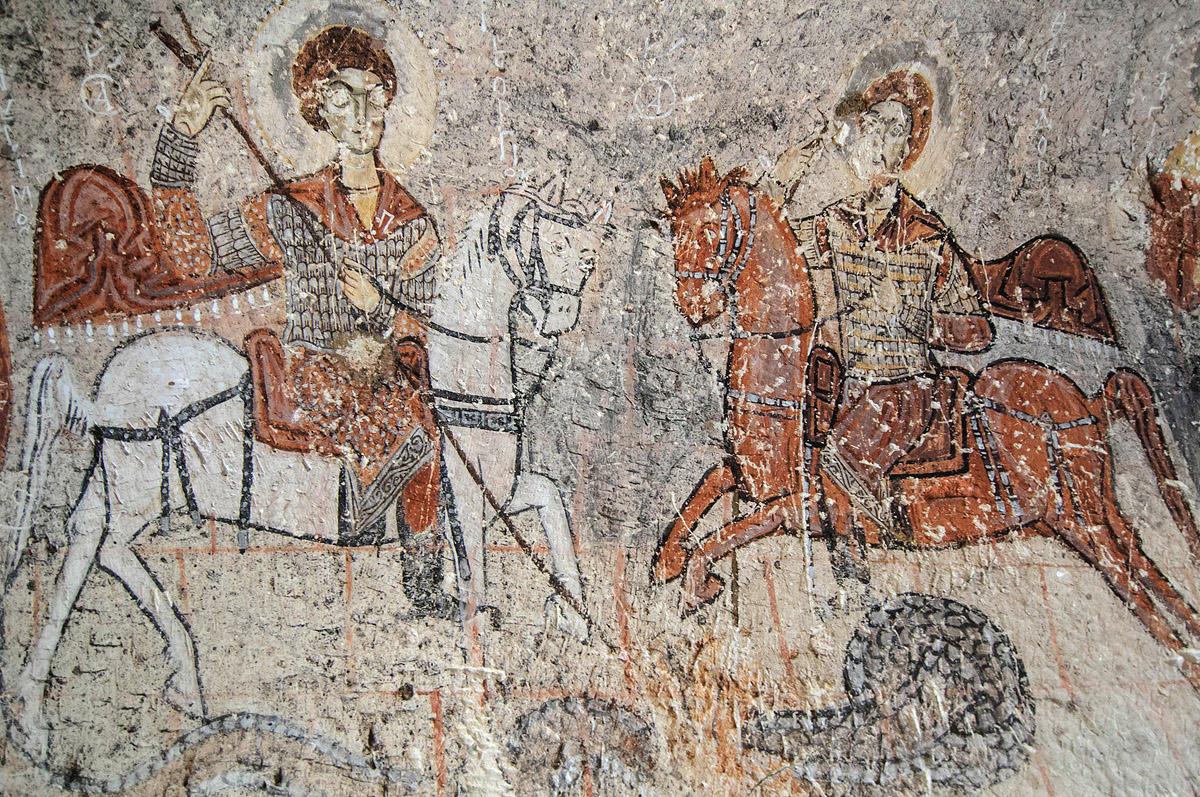
Try Amazon Audible Plus
Warrior Saints, Serpent (Yilanli) Church, Göreme, Byzantine, 11th-12th centuries

Photo by Oleg Belaychuk


Referenced as plate 179, p.167, David Nicolle, "An introduction to arms and warfare in classical Islam", in: Islamic Arms and Armour, ed. Robert Elgood, London 1979
179 Eleventh/twelfth-century Byzantine warrior saint, fresco in 'Serpent Church', Göreme, Turkey.
The right-hand saint is referenced as figure 94 in Arms and armour of the crusading era, 1050-1350 by Nicolle, David. 1988 edition
94 Wall-painting of St. Theodore in subterranean church, Cappadocia, c.1070 A.D.
(in situ Yilanli Kilise, Göreme, Nevșehir province, Turkey)
The rock-cut churches of Cappadocia did not entirely escape the archaizing conventions of Imperial Byzantine art. Nevertheless it would be dangerous to assume that Anatolian Byzantine cavalry did not wear the kind of limited lamellar chest, abdomen and upper arm defences shown in this picture. The upper arm defences seem to be developed from Hellenistic Greek pteruges, strips of coloured cloth or leather hanging from a normally fabric-covered cuirass which were primarily for purposes of unit identification. This idea continued through the Roman period, towards the end of which metal or hardened leather reinforcements seem to have been added to further protect the shoulders. Later, Byzantine, pteruges could well have persisted as an élite uniform for metropolitan guard units. Very similar armours, though normally lacking the arm protections, appear in twelfth- and thirteenth-century Saldjūk art from Iran and neighbouring regions. One would, however, assume that the élite of Byzantine heavy cavalry also wore mail hauberks, perhaps beneath their decorated tunics. Note that by 1070 A.D. deep saddles with high and supporting cantles and pommels are appearing in Byzantine art. Such saddles were a necessary adjunct to the straight-legged riding position, couched lance and “shock cavalry” tactics associated with the twelfth-century European knightly class, all of which had probably evolved in Byzantium during the tenth and eleventh centuries.